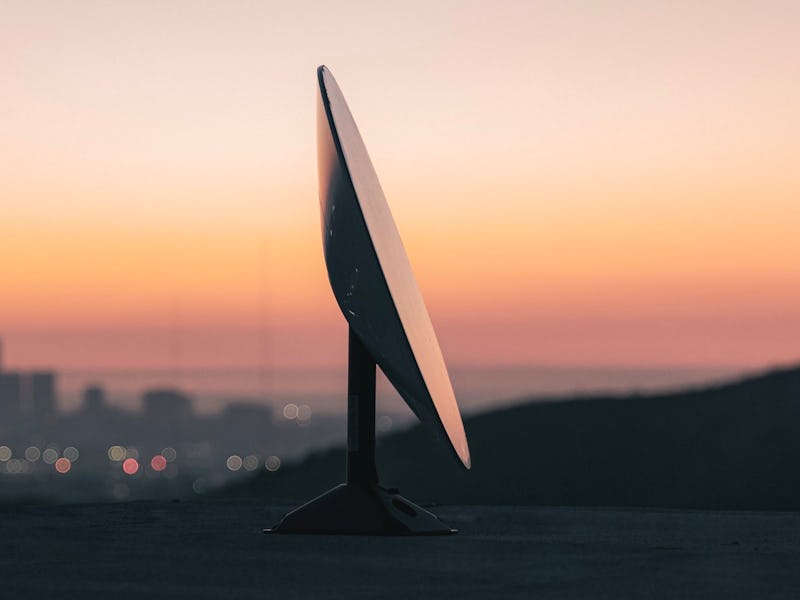SpaceX Starlink: futuristic images reveal the terminal to get connected
The internet connectivity constellation is taking shape, and it's going to use a pizza-like dish to get connected.

Starlink, SpaceX's constellation designed to provide high-speed, low-latency internet practically anywhere, is taking shape.
Two images, discovered by Twitter user "flcnhvy" on Starlink's website, emerged Wednesday of the terminal that will be used to maintain a connection with this constellation. SpaceX has been launching batches of Starlink satellites since May 2019, with the goal of launching a beta service later this year. Users will install the terminal pictured to gain access to the internet with planned speeds of up to one gigabit per second and latencies in the tens of milliseconds.
Elon Musk, the SpaceX CEO, explained via his Twitter page Wednesday that the images had changed slightly since this was revealed:
"Small note: latch on post near base is gone & powered Ethernet wire is less obtrusive in production version"
Musk also explained how the dish would change positions over time to maintain the correct angle:
"Starlink terminal has motors to self-orient for optimal view angle. No expert installer required. Just plug in & give it a clear view of the sky. Can be in garden, on roof, table, pretty much anywhere, so long as it has a wide view of the sky."
The SpaceX terminal.
The images, which show a futuristic-looking satellite, give fans the best glimpse so far of how the system will work in practice. While some satellite services may enable a phone or other device to connect directly with the craft, Starlink uses a terminal that Musk has compared to the size of a pizza box.
The SpaceX terminal.
Musk has been gradually outlining this system over the past five years as a means of disrupting the internet industry while also providing more funds for ambitious missions like a city on Mars. Musk has explained how the constellation could help SpaceX capture around three percent of the $1 trillion internet connectivity industry. This would be a massive boost considering the whole satellite launch industry only takes in around $5 billion per year as a whole, and it could help foot the estimated $100 billion to $10 trillion required to build a Mars city by 2050.
Starlink forms part of this overarching plan. This week, SpaceX also received approval from the Federal Communications Commission for a Starlink router. The application revealed just one image, of the router's base that shows a fun triangular sticker.
The Starlink router base.
SpaceX has also started taking down more detailed information from prospective customers. An email sent out to previously-registered customers requested an update to their stored information. Where previously interested customers could register their interest with just an email address and a ZIP code, Starlink now requests a full address to provide more precise information about the rollout.
All of this is building to Starlink's expected beta test. The test, announced by Musk in April 2020, involves a private test around three months from that date and a public test three months after that. Initial tests would focus on residents at high latitudes, but it's unclear at this stage what exactly constitutes a high latitude.
The Inverse analysis – SpaceX has finally taken the wraps off its Starlink terminal, and it looks fantastic. Whether it will look quite so fantastic in person remains to be seen. Fans responding to Musk's posts shared images of building roofs covered in satellites, as people aim to get connected for television and other services.
The company has made big promises with Starlink, suggesting customers can expect high speeds at reasonable prices from areas without the necessary ground structure for high-speed internet. The beta test should offer some real-world impressions of whether SpaceX can deliver on these goals and more.
This article was originally published on